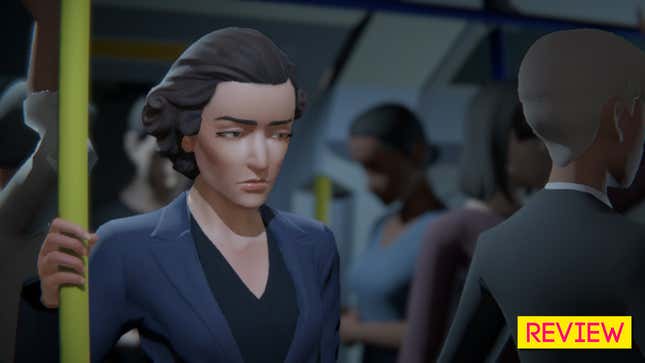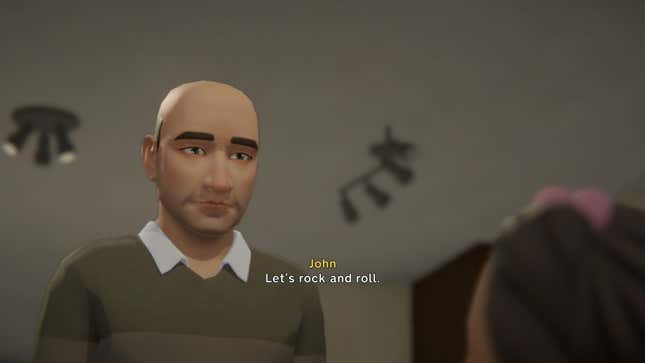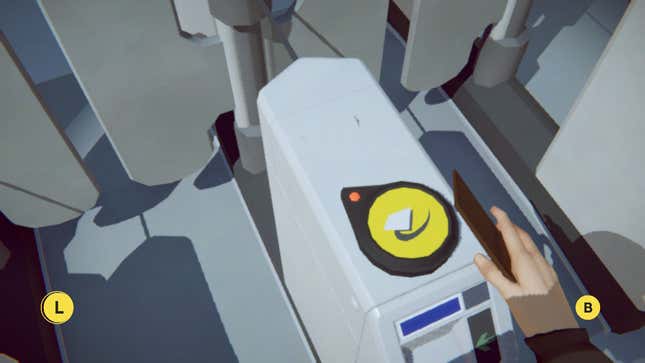
For its 50th anniversary in 2017, New York magazine published a special issue called “My New York.” The intention, spelled out over 200 pages, was to point out the surprisingly intricate ways New Yorkers are connected to each other. On page 86, you’d see a reference to a musical written by Sting. A footnote told you to flip to page 142, where you’d read an as-told-to by the designer Donna Karan, who was connected to Sting’s Ashtanga teacher. A footnote on that page told you to flip to page 148 and read about The Odeon, which sported tablecloths doodled on by one of Karan’s high school classmates. And so on and so forth.
Living in or near a big city—whether it’s the electrifying center of Manhattan or the quietly buzzing outskirts of London—is often a paradoxical exercise in isolation. You’re surrounded by more people than your mere human brain could possibly compute. And yet it’s easy, natural even, to close yourself off to the tidal wave of stimuli, tuning out the sea of voices and faces as instinctively as you would an inane AM radio station.
But New York’s anniversary issue essentially said, “Fuck that.” It illustrates how we’re all more intertwined than you’d believe, how finding a meaningful connection is no more difficult than turning the page.
Last Stop, an adventure game released earlier this summer for most every platform on the market, pulls off the same trick.
Yes, Last Stop is technically a video game, but it’s structured—and functions—a whole lot more like an interactive TV show. Developed by Variable State (Virginia) and published by Annapurna Interactive (a whole bunch of zeitgeist-defining indie games), Last Stop is, on paper, an adventure game set in a fictionalized version of London suburbia. You do typical adventure game things—strolling around fixed-camera 3D environments, talking to non-player characters, choosing dialogue options, infrequently interacting with objects, and even less frequently completing quick-time events, few of which pose any degree of challenge.

If you’re on the hunt for a mechanically complex adventure game, Last Stop probably isn’t for you. But if you’re down for a great story that’s told over 18 episodes, each lasting around 20 to 25 minutes a piece—plus a 40-minute-long finale—you’re in for a treat. Over the past month, I consumed Last Stop as I would a compelling TV show, knocking out an episode or two each night (when I could). I recently finished the game, and have not been able to get it out of my head since.
Read More: Last Stop’s Meant To Feel Like A Playable TV Show
It’s clear from the start that Last Stop features supernatural goings-on. A prologue set in the ‘80s sees two teenagers pulling a prank on and then running away from police. Fleeing into a Tube tunnel, they soon come to a sudden stop at a dead end. A guy in a tan suit (thanks, Obama) holds a door open. Beyond the threshold: a green portal. He asks if they’re coming along. One goes forth. One does not.
From there, Last Stop casts you as three unaffiliated London suburbanites, whose tales unfold over three separate storylines. Complete one chapter for one storyline, and you’ll have to complete it for the other two, which prevents you from rushing through one storyline all at once.
- There’s Donna, a rambunctious high schooler who appears to care little about high school. Her plot, “Stranger Danger,” is far and away the most supernatural of the three. Donna and her two BFFs, Vivek and Becky, surreptitiously tail their enigmatic neighbor into an abandoned community pool. He displays some apparent magical powers, oozing the same vivid green that emanated from the portal in the prologue. They accidentally knock him cold. Whoops.
- Meena, the star of “Domestic Affairs,” works at some sort of lock-and-key intelligence agency. She has a small family: a husband and a school-aged son. She does not have the time or patience for either—but does have plenty of time to cheat on the former. Meena’s a total jerk, but I found “Domestic Affairs” to be the most riveting storyline of the trio.
- Finally, there’s John, a rank-and-file government paper pusher. He’s the main character of “Paper Dolls,” but shares a lot of screen time with his young daughter, Molly, and his richer, younger neighbor, Jack. Oh, yeah, and he swaps bodies with Jack at the end of the first episode. Think Freaky Friday, but British-er.

Though their lives are functionally unconnected, these characters are thematically linked; each, in their own way, sequesters themselves from others, and struggles to form meaningful connections. Yes, John has a daughter he’d walk to the moon for, but he has no friends (as Molly so bluntly points out). Donna ferociously quarrels with her sister and mother, the latter of whom is sick with an undefined illness. And Meena, of course, focuses on nothing but getting ahead in her career, to the detriment of all her personal connections.
That throughline is essential for helping Last Stop’s disparate plots gel, as they’re admittedly tonal mismatches. “Paper Dolls” is presented as a family-friendly comedy, “Domestic Affairs” is akin to a spy thriller, while “Stranger Danger” has unmistakable overtones of British teen dramas, à la Misfits (well, the better, earlier seasons) or Skins. On this, a hats off must be given to composer Lyndon Holland, who musically nails the tone for each.
Bouncing between the three might sound like cognitive whiplash—c’mon, just pick one, Last Stop!—but it ultimately works in the game’s favor. Since you have to play one plot to progress the other two, you’re never mired in the same themes. And if you play the game like I did, as if it were a TV show to engage with over intermittent sessions, you’d always come back to something fresh-feeling. One moment, that means chuckling at the semi-slapstick humor in “Paper Dolls.” The next, it’s all about decoding the mystery that drives “Domestic Affairs”...before the game tells you what’s up. Variety spices Last Stop up.
It’s worth mentioning: Last Stop is very, very British, to the point where I sometimes had to pause for a sec just to figure out what characters were saying. I don’t even want to tell you how many times I almost bothered Kotaku’s intrepid UK-based editor, John Walker, to help decode some of the more esoteric phrases. I ultimately never did, because while I do not understand time zones, I do respect them and would never want to wake a man in the middle of the night just to find out what the hell a “chicken dipper” is. (It’s a chicken finger, apparently.)
In the grand tradition of such British multiplot yarns as Love, Actually, the trio of plotlines are at first largely unrelated. As you play, though, your three protagonists will cross paths, but only superficially. (For instance, during one scene, while you’re sitting at a bus stop, patiently suffering through a brutal headway, one of the other protagonists strolls by in the background. When you play that character’s chapter, you walk by the bus stop and see your first character waiting. There is no in-game option to make them interact.) Then, by the end of the game, these story threads coalesce.
It’s not a spoiler to say that Last Stop’s protagonists eventually meet. Back in the spring, Variable State told me that the plots were initially written as isolated concepts, but even then it felt wrong to keep them separate. There’s a palpable energy connecting John and Meena and Donna, even if they don’t physically share the same space. Obviously the three would intertwine.
Their meeting goes down in a bombastic finale that has you zipping from character to character. What’s more, it ties up all of the loose ends raised over the course of Last Stop’s three mystery-heavy plots. Not all of the answers are satisfying, mind you, but at least you don’t walk away flummoxed at what happened hours earlier.

That chapter is also the first and final time Last Stop gives you any sort of agency over the narrative outcome. Though you control what Meena, Donna, and John say in conversations throughout the game, these choices don’t really affect the plot. Then, during the final ten minutes, you’re given a neat A/B choice as to how each character should wrap up their tale. All six endings (two for each of the three characters) make thematic and logical sense. But it’s hard not to feel like the last-minute choice comes out of nowhere.
Last Stop spends its entirety on a determined beeline to the goalposts, detailing exactly who these characters are and what they do and how they live their lives. Right before the buzzer, it kicks the ball to the player. I almost wish Last Stop didn’t even give us the option. The rest of the game barely offers the illusion of choice. Why do so right at the end?
But the message nevertheless prevails. The three protagonists of Last Stop spend much of their respective lives in various states of loneliness, from John’s friendlessness to Donna’s teenage angst to Meena’s “screw everyone” career blinders. By the time the credits roll, no matter what ending you chose, it’s clear these three individuals—who otherwise would have nothing in common and have no reason to interact—have cemented an inextricable bond. You too might’ve felt alone, once or twice or thrice. You might feel that way right now. You don’t need to. You just need to turn the page.

